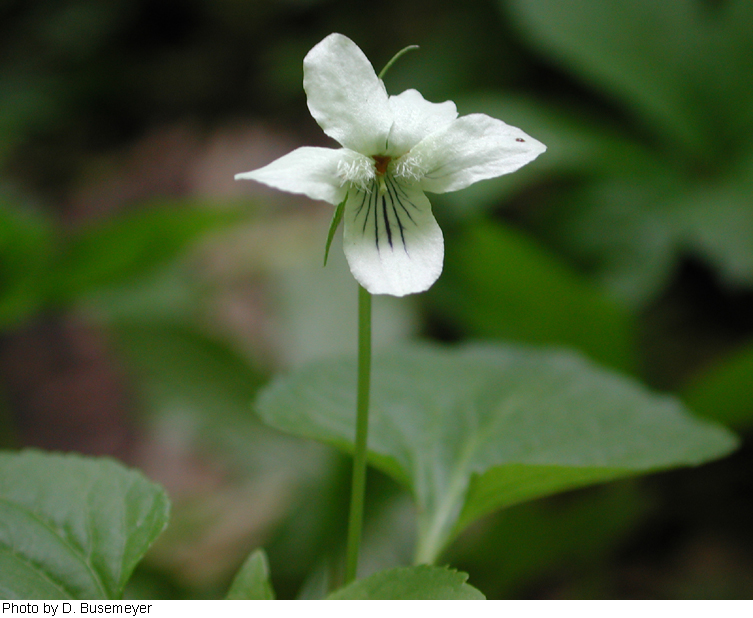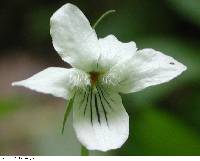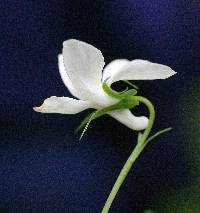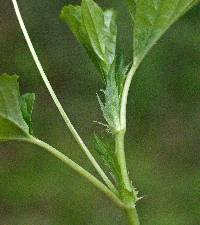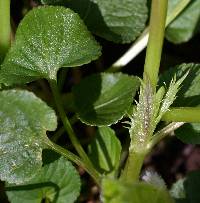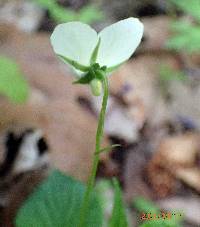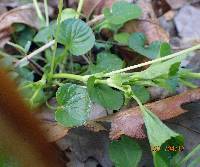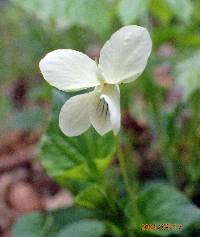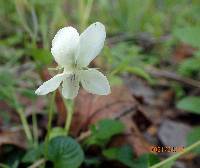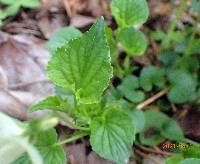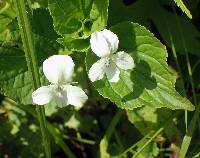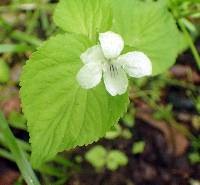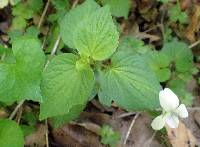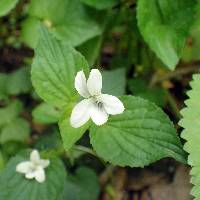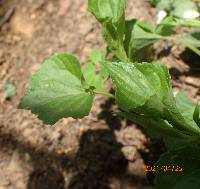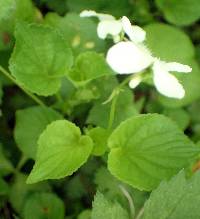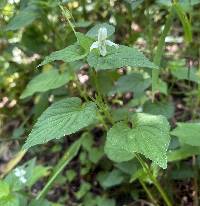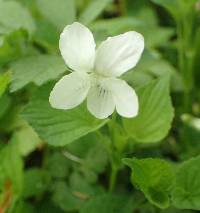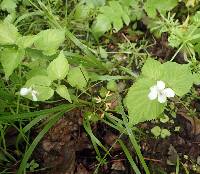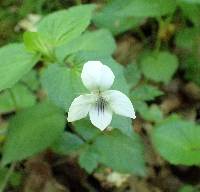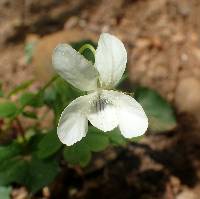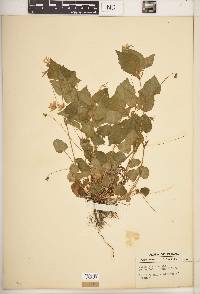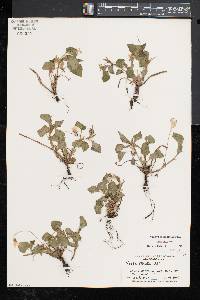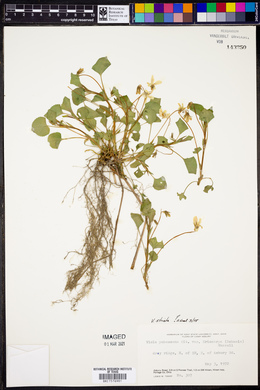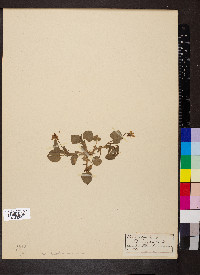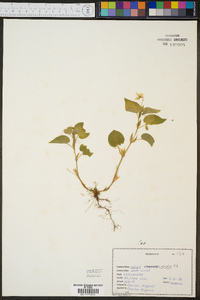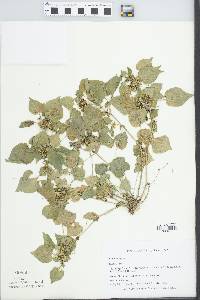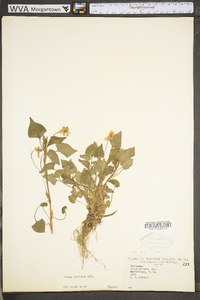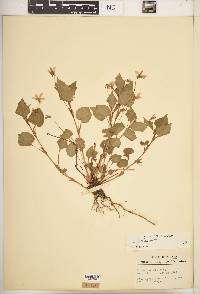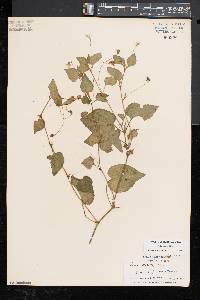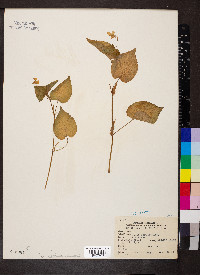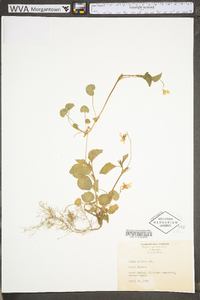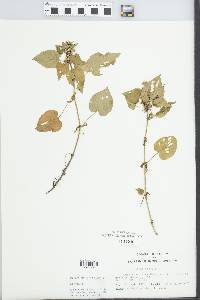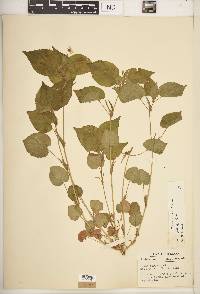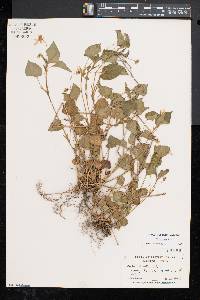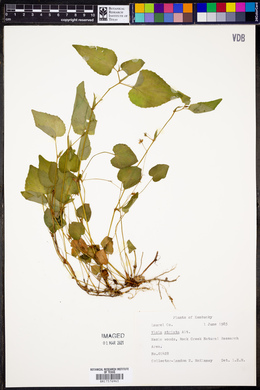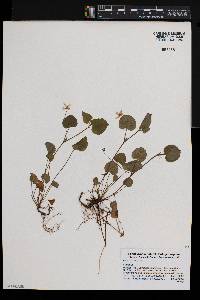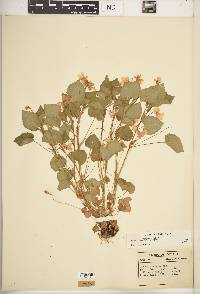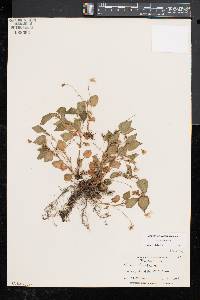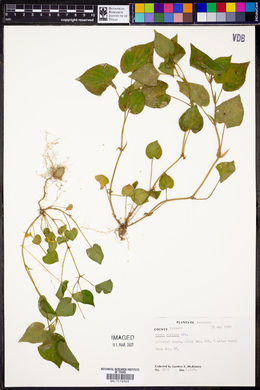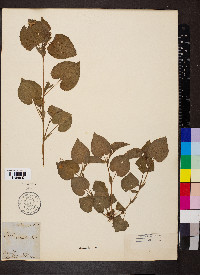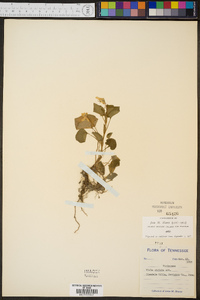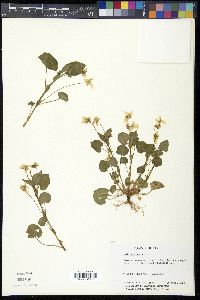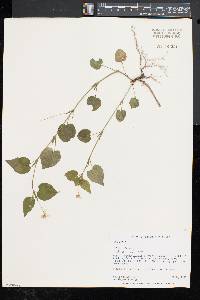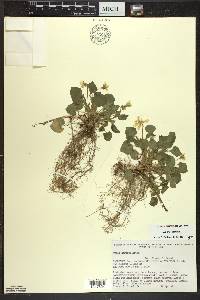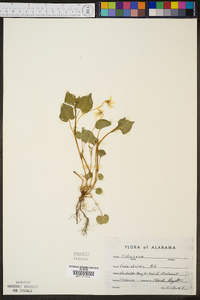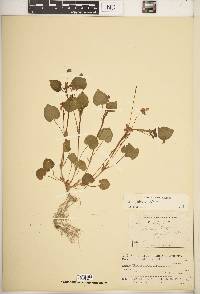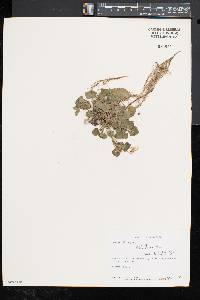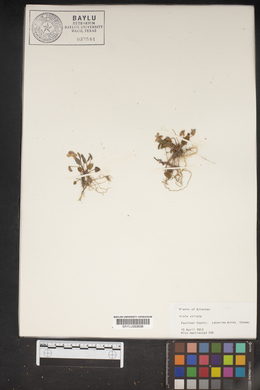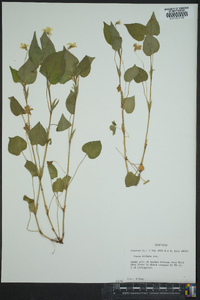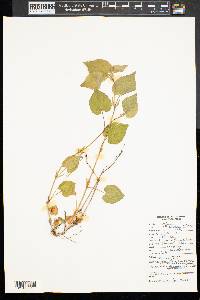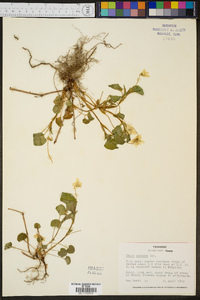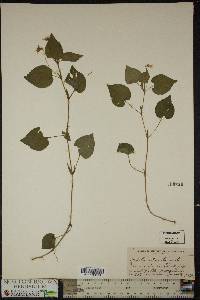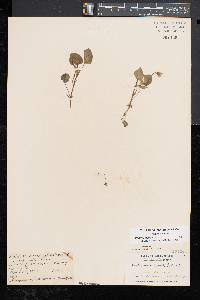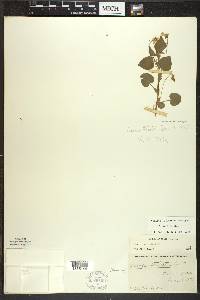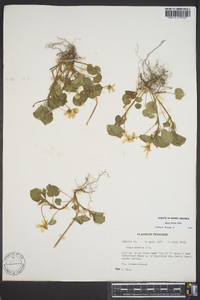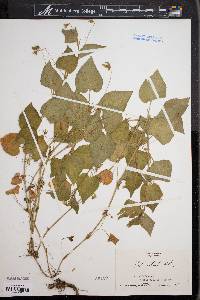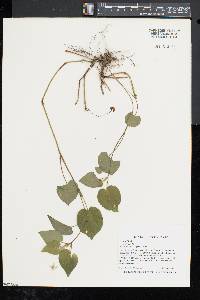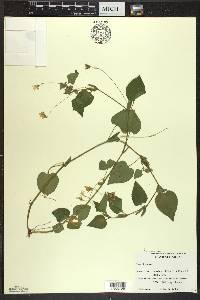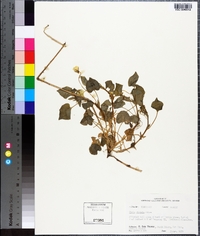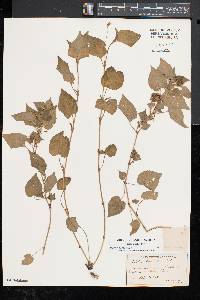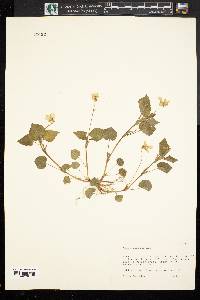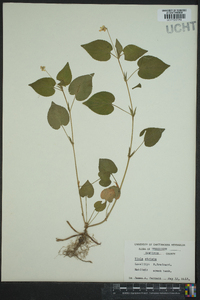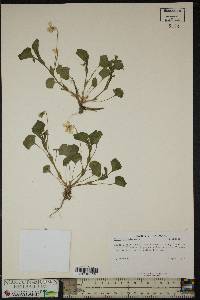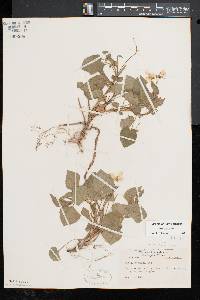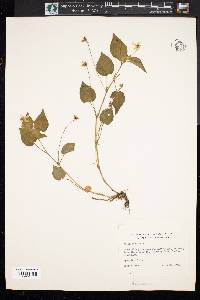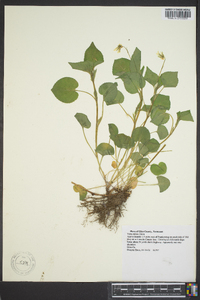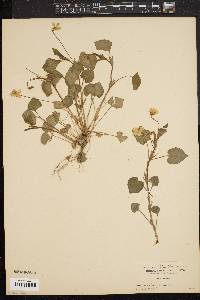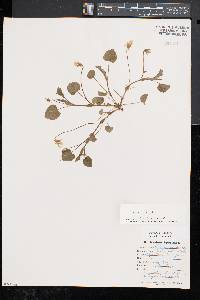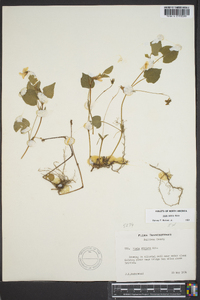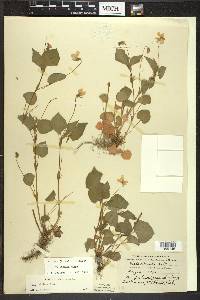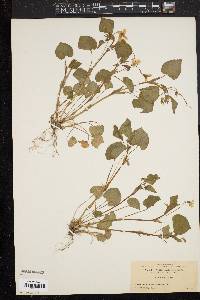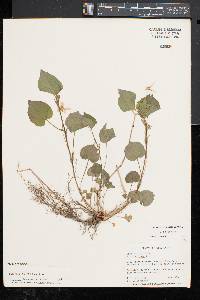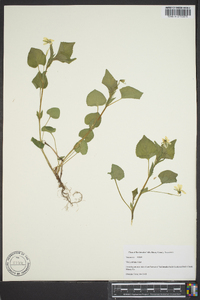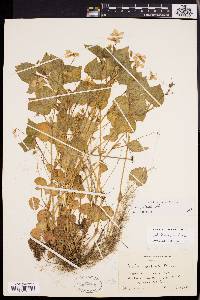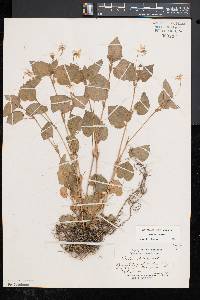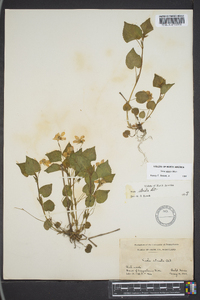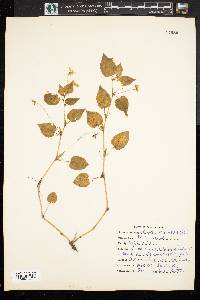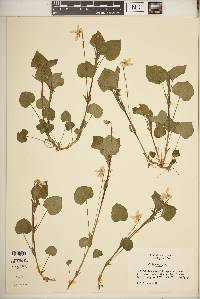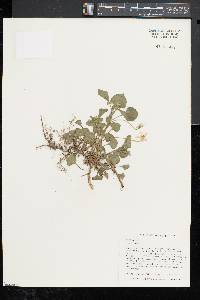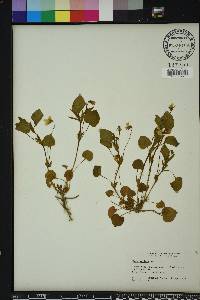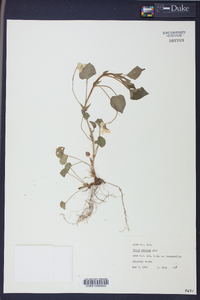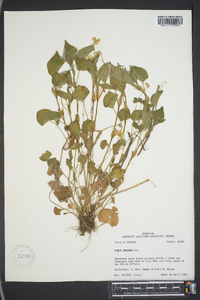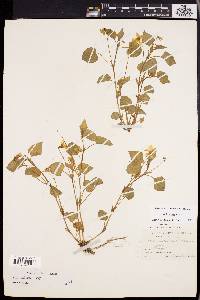Viola striata
|
|
|
|
Family: Violaceae
Cream violet, more...Striped Cream Violet, Cream-white or pale or striped violet
[Viola debilis Michx., moreViola ochroleuca Schwein.] |
Perennial herb 6 - 30 cm tall Leaves: both basal and alternate, long-stalked, finely round-toothed, 3 - 7 cm long, egg-shaped to kidney-shaped with upper surface typically covered in stiff, flattened, sharp-pointed hairs, especially near the base. The upper leaves have pointed tips while the lower leaves have blunt tips. Stipules green, 1 - 2.5 cm long, lance-shaped with pointed tip, and fringed along edges with thread-like segments about 3 - 5 mm long. Flowers: in upper leaf axils, long-stalked, cream-white or ivory, about 1.5 - 2.5 cm long, bilaterally symmetric with two upper petals, two lateral petals, and lower petal with base modified into an obvious, rounded nectar spur. In the summer, very fertile flowers that do not open (cleistogamous) are usually produced on leafy branches. Sepals: five, green, fringed with slender bristles, lance-shaped with 2 - 4 mm long ear-like appendages (auricles) at the base. Petals: five, separate, all differently shaped, cream-white or ivory, but lowest petal with brown-purple lines or dots inside. The two lateral petals have a beard of many threadlike hairs (often all petals with heavy beard near base), and the lowest petal is prolonged at its base into a thick, 3 - 4 mm long, rounded spur. Stamens: five, separate, but very tightly arranged so anthers touch as they surround ovary. The filaments are very short, and the lower two stamens have spur-like nectaries on their backs that extend into the spur of the lower petal. Pistil: with a single-chambered, superior ovary; and a single slender style that bends at the tip below the stigma. Fruit: a many-seeded, hairless, 4 - 6 mm long, ellipsoid to globular capsule that opens lengthwise from top. The seeds are pale brown and have a large amount of oily endosperm, and often an appendage (aril). Stems: clustered (arising from a rhizome), erect to spreading or ascending or reclining, mostly hairless, producing both leaves and flowers. Similar species: Viola striata is often confused with V. canadensis, but that species has white flowers with yellow centers and purple tints on the outside, non-fringed sepals, and papery, white, narrow lance-shaped stipules lacking teeth or fringe. Two other species that are similar, despite their light bluish flowers, are V. labradorica and V. rostrata, with which this species commonly hybridizes, but those species further differ by having slender and longer flower spurs (usually over 5 mm), and no fringe of slender bristles on the sepals. The hybrid with V. rostrata, V. x brauniae, can be distinguished most readily by its pale lavender flowers with a dark purple eyespot. The hybrid with V. labradorica, V. x eclipes, can be distinguished by its unique flower color of pale blue with a large white center, and irregularly round-toothed leaves with shorter abruptly pointed tips. Flowering: April to July Habitat and ecology: Not common, primarily localized to moist woodlands, especially in floodplains. Occurence in the Chicago region: native Notes: This species may be most closely related to several species in the V. acuminatacomplex of southeastern Asia (see Ballard 1994). Etymology: Viola is the classical name for the genus. Striata means "striped or fluted" in reference to the striping on the lower petal. Author: The Field Museum Plants glabrous or nearly so, clustered, 6-30 cm, reclining or erect from a short rhizome; lower cauline and basal lvs orbicular-ovate and blunt, the upper cordate-ovate and acute, with many small teeth, all plicate-rugulose; stipules large, foliaceous, lanceolate to lance-oblong, pointed, fimbriate-toothed; fls very numerous, rising well above the lvs; sep fimbriate-ciliate, lance-linear, with pronounced basal auricles; pet cream-color or ivory, usually with brown-purple veins near the base, but not washed with anthocyanins either front or back, the lateral ones strongly bearded, the spur thick and well- developed, 3-4 mm; style slender, the tip bent; cleistogamous fls on leafy branches 2-15 cm from the lf-axils in summer; frs ellipsoid-globose, 4-5 mm; seeds pale brown; 2n=20. Usually in sun or light shade, along ditches and streams, often weedy; Mass. to Ill. and reputedly Minn., s. to Ga., Ark., and e. Okla. Apr.-June. A hybrid with no. 26 is V. آrauniae Glover ex Cooperr. One with no. 24 [Viola conspersa Rchb.] is V. إclipes H. E. Ballard. Gleason, Henry A. & Cronquist, Arthur J. 1991. Manual of vascular plants of northeastern United States and adjacent Canada. lxxv + 910 pp. ©The New York Botanical Garden. All rights reserved. Used by permission. From Flora of Indiana (1940) by Charles C. Deam Our most common stemmed violet. It grows both in the open and in the shade, preferring the moist alluvial soil of woodland along streams and elsewhere. …… Indiana Coefficient of Conservatism: C = 4 Wetland Indicator Status: FACW |
|
|
|

